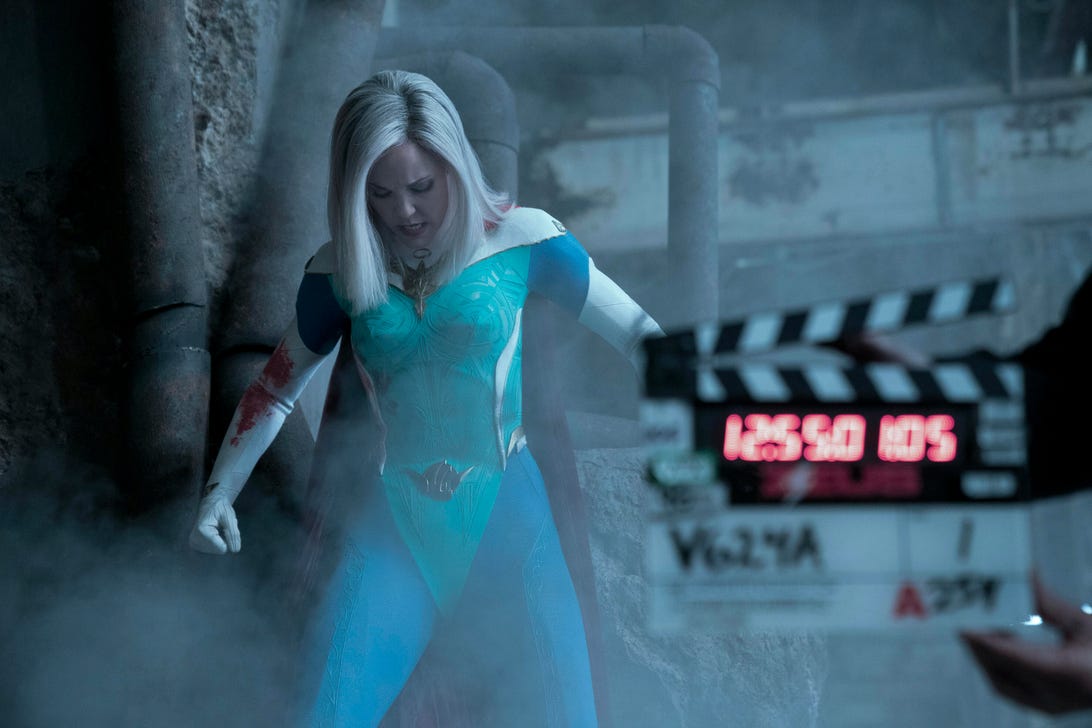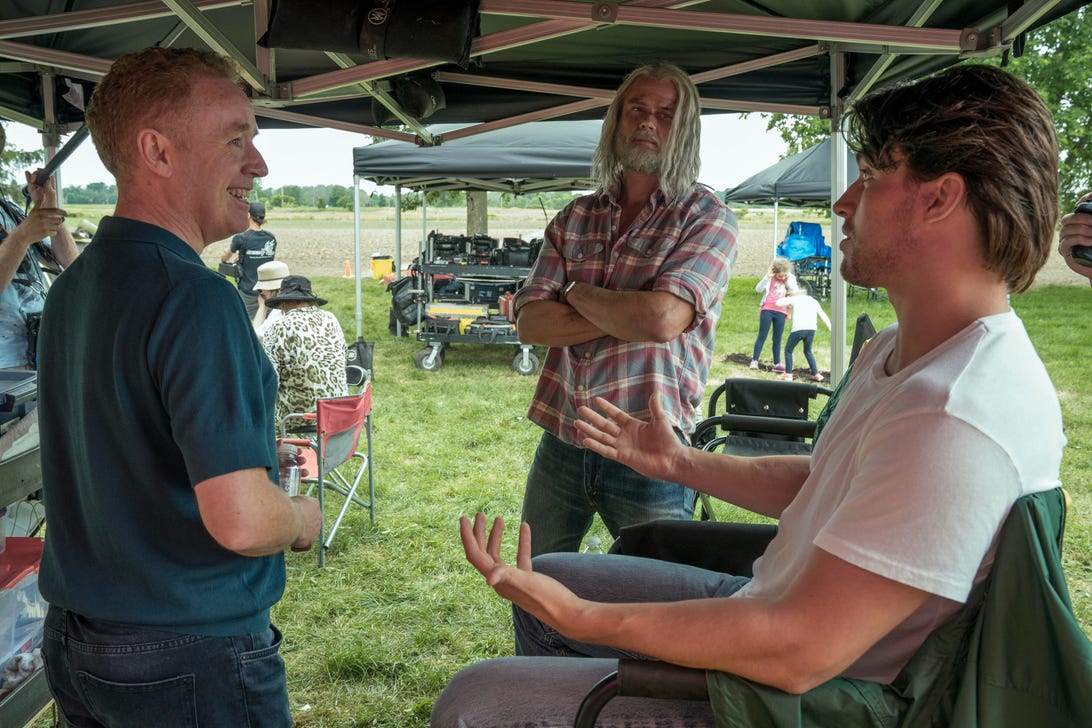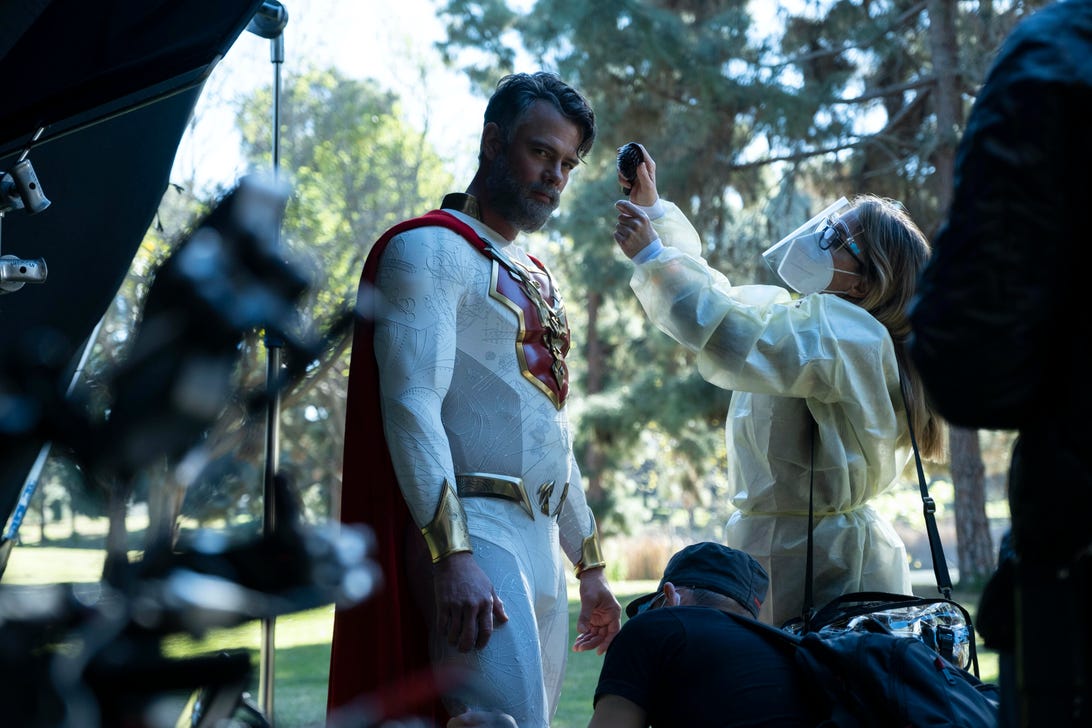
Leslie Bibb as Lady Liberty in Netflix series Jupiter’s Legacy.
Netflix
Writing the biggest characters in comics may be a dream come true, but even Marvel icon Stan Lee didn’t recommend sticking around forever. In fact, he advised Jupiter’s Legacy creator Mark Millar to strike out his own. Several comics and one multimillion-dollar deal with Netflix later, the Jupiter’s Legacy TV series is here to challenge Marvel’s onscreen adventures.
Based on a comic by Millar and artist Frank Quitely, Jupiter’s Legacy is an eight-part series streaming on Netflix now. It features superheroes like the Utopian, Lady Liberty and Skyfox who provide a character-driven spin on archetypal heroes like Superman, Wonder Woman and Batman.
Jupiter’s Legacy arrives in a crowded market. We’ve got the Marvel Cinematic Universe movies and TV series, the DCEU and Arrowverse, Venom, The Boys, Watchmen, Invincible, Project Powers and Thunder Force… the list of superpowered series and sequels goes on. Millar thought about that crowded market even when he conceived the original comic. “I’d just done Marvel’s biggest books,” he recalls, “I’d done Kick-Ass, and if I was going to do another superhero story it had to be the greatest superhero story of all time.”
“I was aware that I was never going to own Marvel and DC stuff,” Millar told me in a Zoom call from his home in Scotland. From the early days of comics, when writers and artists weren’t even credited, to today, when their chapters spawn multibillion-dollar media franchises, “work for hire” has always been a thorny subject. Most recently, writer Ed Brubaker lamented that he’d seen no remuneration for creating Marvel’s Winter Soldier even after the character headlined a Disney Plus TV series.


Mark Millar with stars Josh Duhamel and Andrew Horton on the set of Jupiter’s Legacy.
Steve Wilkie/Netflix
Millar worked on The Ultimates and Civil War comics, both of which explicitly laid foundations of the Marvel Cinematic Universe, but he feels he got something out of the deal. “After writing Marvel’s biggest books, I had an audience I could siphon off,” he notes — and the success of his own creations like Kick-Ass and Kingsman led to a £25 million ($31 million) sale of his Millarworld production company to Netflix in 2017.
It turns out Millar’s work for Marvel and DC was good practice for creating the world of Jupiter’s Legacy. This expansive superhero superhistory spanned from 1929 to the distant future, encompassing huge numbers of characters across multiple timelines. “I just thought I’m going to treat everything I’ve done up to this point as a training exercise,” Millar says.
Millar was involved with adapting Jupiter’s Legacy through the writing process and then, after filming, six months of editing. Lockdown filming restrictions have reportedly stalled The Magic Order, Millar’s other show in development with Netflix, but Jupiter’s Legacy had largely finished shooting in Toronto when the coronavirus hit, apart from reshoots in January.


Josh Duhamel with cape and COVID precautions during reshoots.
Adam Rose/Netflix
The pandemic meant Millar could be involved with the edit from his home in Scotland without having to shave, get dressed or fly over to LA. In fact, he was able to screen the work in progress — moving the TV into the garden due to COVID restrictions — to gauge reactions from family and friends. “The trouble is most of Glasgow has now seen it,” he laughs.
Originally, Millar considered adapting the comic series into a movie, but Guardians of the Galaxy director James Gunn pointed out it was more suited to a 40-hour TV series. In fact, season 1 follows two plot lines: the superheroes in the present day and their origin story in 1929 told in flashbacks. That origin story is laid out very quickly in the first few pages of the comic, and when Millar conceived a movie version he would have quickly dispatched that plotline before the credits. But for the TV version, showrunner Steven DeKnight suggested expanding the backstory instead.
Millar compares the result to Steven Spielberg’s film Close Encounters of the Third Kind. It’s a risky move and could alienate readers who know where the storyline is going, but Millar says he couldn’t be happier with the decision — and notes that season 1 only uses elements from the first couple of issues of the comic. “We’ve got a ton of stuff we could do if we make a season 2,” he says.
Despite the competition, Millar doesn’t think we’re going to tire of superheroes anytime soon.
“When times are tough people turn to superheroes,” he says. “Superman was created by two Jewish kids in the Depression when World War II was looming, then in the Cold War the Marvel Universe was all about radioactivity when atomic war was looming over everywhere. … When you see stuff on the news that’s terrifying, you want to see Spider-man save everyone.”